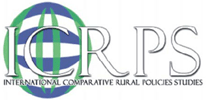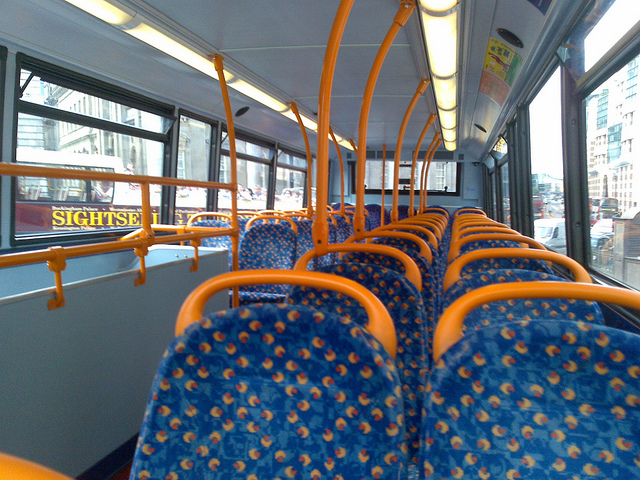by Eric Marr, 5/11/2012
“Density is not the main barrier to providing public transport that offers a real alternative to the car; rather, it is a rationalization for inaction.” Paul Mees (2011), Transport for Suburbia
If one resides in a rural area and does not have access to a personal vehicle how do they get around? Consider the very nature of a rural community: dispersed population, centralized services, and long distances. Imagine you had no way of reaching the services and activities essential for quality of life. Well, as Part 1 of this series demonstrated, this is a reality for many people residing in rural communities.
One solution to this issue is a public transportation service. However, this idea is far from accepted among decision-makers or the general population; at least in Canada. Indeed, the mere suggestion of public transportation in a rural area is met by rolled eyes and, in some cases, an almost hostile opposition to the very concept. But does this mean that it is infeasible? Certainly not. I am confident that European readers will not feel that transportation outside urban centres is impossible which suggests that the myth needs to be dispelled among Canadian (and probably North American) audiences. One way of doing this is through education and examples, which will be the purpose of Part 2 of this rural transit series.
There are a multitude of rural transit examples operating across Europe and North America which fit into a few key categories: Conventional Transportation, Flexible Transportation, Community Transportation, Private Taxis, and even the Mixed-Services Model (e.g. mail delivery transporting human passengers).
Conventional Transportation
The Conventional Transportation model is also sometimes referred to as Fixed-Route and is the model generally found in urban centres. The overarching term Conventional Transportation covers such modes as rail, subway, trams, and full-size buses with fixed-routes. Indeed, this is reflected in a simple definition of Fixed-Route Transit as follows “this is the familiar ‘bus route’ in which a vehicle, usually a bus, travels a consistent path, stopping at specific locations at scheduled times one or more days each week. This model can be efficient in communities with dense populations and large numbers of people who have easy access to routes” (RTC, 2007).
In a rural setting, conventional transportation relating to intra-community transportation is less common due mainly to long distances and low ridership thereby making this model financially unviable or inefficient for most rural communities. Examples of Conventional Transportation systems in rural communities include Chatham-Kent Transit Conventional Bus Service in Ontario and Kings Transit in Nova Scotia as well as the system familiar to ICRPS 2011 alumni in Sogn og Fjordane County, Norway.
Flexible Transportation
When compared with the Conventional Transportation model the Flexible Transportation model is considered to be more appropriate for rural areas. Indeed, this is reflected in the prevalence of this model in rural areas where public transportation exists.
The term flexible transportation can be used to broadly cover a range of public transportation systems that do not use fixed routes and/or schedules. The style most often associated with flexible transportation is Demand-Responsive Transportation, also referred colloquially as dial-a-ride transit. A basic definition of Demand-Responsive Transportation is provided by the United States’ Federal Transit Administration which describes it as “a transit mode comprised of passenger cars, vans or small buses operating in response to calls from passengers or their agents to the transit operator, who then dispatches a vehicle to pick up the passengers and transport them to their destinations” (Ellis & McCollom, 2009).
While the feasibility of conventional transportation systems is often questioned, it has been argued that flexible transportation is actually becoming increasingly viable with advancements in transport telematics/Intelligent Transport Systems (ITSs) (Mulley & Nelson, 2009). Indeed, this new technology has overcome many of the issues with routing as well as time delays between booking and accessing transportation.
Examples of Flexible Transportation services exist all over Europe and North America with a popular example coming from Wiltshire, United Kingdom and the Connect2Wiltshire service.
Community Transportation
Another important model is that of Community Transportation which is a broad term covering many forms of less formal public transportation provision generally offered by non-profit organizations, community groups, charities, or volunteers. The level of government involvement will vary considerably depending on the style and context. For instance, governments may provide ongoing funding, start up funds, marketing support, in-kind support, or have no involvement at all. An example of a well organized community transportation service can be found in Bancroft, Ontario with the Bancroft Community Transit service.
Private Taxi Model
The private taxi model pertains to the familiar service of a privately operated, and commercially motivated, service responding to clients’ requests for transportation to a specific destination. Private taxis are very common in the urban areas of Canada and have a presence in rural areas, although are far from being uniformly available to rural residents across the country. While private taxis are very flexible and generally feasible in areas with lower densities they still do require economies of scale in order to justify operations. Further, due to long distances in rural areas, taxi fares may be found to be too expensive for some groups.
Therefore, a mixed approach including privately operated taxis with subsidization from a local authority provides an opportunity to expand taxi service into areas generally considered financially unfeasible. An example of a taxi subsidization program can be found in the Highland Council of Scotland whereas an (urban) example of a taxi voucher program can be found in the City of Olathe, Kansas.
Mixed-Services Model
A final, albeit least discussed, option for public transportation in rural areas is that of mixing services which already operate in these areas such as school buses and mail delivery. First, there has been recognition that school buses already operate a specialized public transportation service in rural areas which could be expanded. Examples of expanded school bus mandates come from Chesterfield County, North Carolina, Mason County, Washington, and Ystad, Sweden with the Byabussen service.
A second opportunity for mixing services in rural areas comes from combining passenger transportation with mail delivery. The concept behind this option is quite simple in that mail delivery already takes place in most rural areas and an opportunity exists to increase the size of vehicles in order to accommodate passenger transportation. This could be in the form of transporting passengers between collection and sorting locations (inter-community) or along with the actual delivery of mail thereby resembling a fixed-route service (intra-community) (White, 2011). This model is generally referred to as a Postbus and has been utilized in the United Kingdom and Switzerland.
Overall, it is clear that there are multiple options for addressing unmet transportation needs in rural communities. However, not every option will be appropriate for the specific needs of a community. It is essential that a rural area assess exactly what their needs are and then consider which model fits with their context and capabilities.
This concludes the two part series on Rural Transit. If you have any comments or questions please post them here or email me directly at emarr at uoguelph.ca
References
Ellis, E., & McCollom, B. (2009). Guidebook for Rural Demand-Response Transportation: Measuring, Assessing, and Improving Performance. Washington D.C: Transportation Research Board (TRB).
Mulley, C., & Nelson, J. D. (2009). Flexible transport services: A new market opportunity for public transport. Research in Transportation Economics, 25, 39–45.
RTC. (2007, February). Models of Rural Transportation for People with Disabilities: Rural Practice Guideline Retrieved February 14, 2011, from http://rtc.ruralinstitute.umt.edu/Trn/models.htm
White, P. (2011). Equitable Access: Remote and Rural Communities ‘Transport Needs’ (Vol. 19): International Transport Forum: OECD.a
Eric also reported from ICRPS 2012 in Canada for Exploring Rurality this summer: Renewable Energy and Contemporary Art in Baie-des-sables.
Photo courtesy of Markhillary
 Eric Marr is from Petrolia, Ontario a former oil town in central Canada turned agricultural community. He left the rural life to pursue education in Montreal, Toronto, and finally Guelph where he recently graduated from the Master of Science in Rural Planning and Development program at the University of Guelph. Eric had the opportunity to attend both ICRPS 2011 in Norway and ICRPS 2012 in Quebec. He currently works in policy development for the Ontario Ministry of Agriculture, Food, and Rural Affairs (OMAFRA). Eric’s research interests include transportation in rural communities and land-use planning policy.
Eric Marr is from Petrolia, Ontario a former oil town in central Canada turned agricultural community. He left the rural life to pursue education in Montreal, Toronto, and finally Guelph where he recently graduated from the Master of Science in Rural Planning and Development program at the University of Guelph. Eric had the opportunity to attend both ICRPS 2011 in Norway and ICRPS 2012 in Quebec. He currently works in policy development for the Ontario Ministry of Agriculture, Food, and Rural Affairs (OMAFRA). Eric’s research interests include transportation in rural communities and land-use planning policy.
E-mail Eric at ericmarr“at”gmail.com

